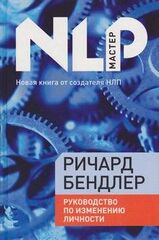Часть 4. МЕТОДЫ РАЗВИТИЯ ЗРИТЕЛЬНО-ПРОСТРАНСТВЕННЫХ ФУНКЦИЙ
Глава 4. Настольные и компьютерные игры для преодоления пространственных трудностей у детей с церебральным параличом[3]
Литература
1. Ахутина Т. В., КричевецА.Н. Использование виртуальных сред для развития пространственных функций у детей с церебральным параличом // Вестник Московского университета. Серия 14. Психология, 2002. – № 4. – С. 77–85.
2. Ахутина Т. В., Форман Н., Кричевец А. Н., Матикка Л., Нархи В., Пълаева Н. М., Вахакуопус Е. Развитие пространственных функций у детей с церебральным параличом с помощью компьютерных и настольных игр // Школа здоровья, 2004. —№ 4. – С. 30–37.
3. Левченко И. Ю., Приходько О. Г. Технологии обучения и воспитания детей с нарушениями опорно-двигательного аппарата. – М., 2001.
4. Финни Н. Р. Ребенок с церебральным параличом. Помощь, уход, развитие. Книга для родителей. – М., 2001.
5. Akhutina Т., Foreman N., Krichevets A., Matikka L., Narhi V., Pylaeva N., VahakuopusJ. Improving spatial functioning in children with cerebral palsy using computerized and traditional game tasks // Disability and Rehabilitation, 2003. – Vol. 25. —N. 24. – Р. 1361–1371.
6. Benton A.L., Hamsher K., Varney N. R. and Spreen O. Contributions to neuropsychological assessment. – New York: Oxford University Press, 1983.
7. Foreman N. P., Orencas C., Nicholas E., Morton P. & Gel M. Spatial awareness in seven to eleven year-old physically handicapped children in mainstream schools // European Journal of Special Needs Education, 1989. – P. 4, 171–179.
8. Foreman N., StirkJ., PohlJ., Mandelkow L., Lehnung M., Her-zogA. & Leplow B. Spatial information transfer from virtual to real versions of the Kiel Locomotor Maze // Behavioural Brain Research, 2000. – P. 112, 53–61.
9. Foreman N., Stanton D., Wilson P. &Duffy H. Spatial knowledge of a real school environment acquired from virtual or physical models by able-bodied children and children with physical disabilities // Journal or Experimental Psychology: Applied, 2003. – P. 9, 67–74.
10. KassS. & Ahlers R. Eliminating gender differences through practice on spatial skills in girls and boys //Journal of Applied Developmental Psychology, 1998. – P. 15, 13–32.
11. Korkman M., Kirk U. &KempS. NEPSY. A developmental neuropsychological assessment. – San Antonio, TX: The Psychological Corporation, 1998.
12. McComas J., Pivik J. & Laflamme M. Children's transfer of spatial learning from virtual reality to real environments // Cyberpsychology and Behavior, 1998. – P. 1, 121–128.
13. Rose D. & Foreman N. Virtual Reality // The Psychologist, 1999. – P. 12, 550–554.
14. Snodgrass L. Imagery training improves both spatial skills and graph reading. Paper presented at the 27th International Congress of Psychology, Stockholm, Sweden. – July, 2000.
15. Stanton D., Wilson P., Foreman N. Using virtual reality environments to aid spatial awareness in disabled children // In: Sharkey P.M. (ed.) Proceedings of the 1-st European conference on disability, virtual reality and associated technologies, Maidenhead, Berkshire. – UK, 1996. – P. 93–101.
16. Stanton D., Foreman N. & Wilson P. Effects of early mobility on shortcut performance in a simulated maze // Behavioural Brain Research, 2002. – P. 136: 61–66.
17. Wilson P. N. Virtual Reality in spatial research // N. Foreman & R. Gillett (Eds.), Handbook of Spatial Research Paradigms and Methodologies. – Vol. 1: Spatial Cognition in the Child and Adult. Hove: Psychology Press, 1997.












